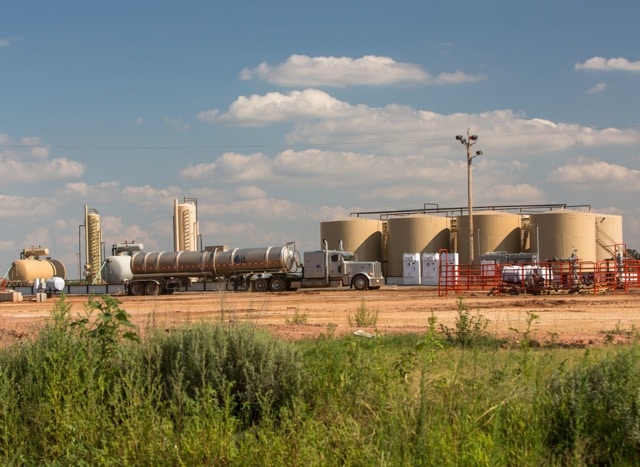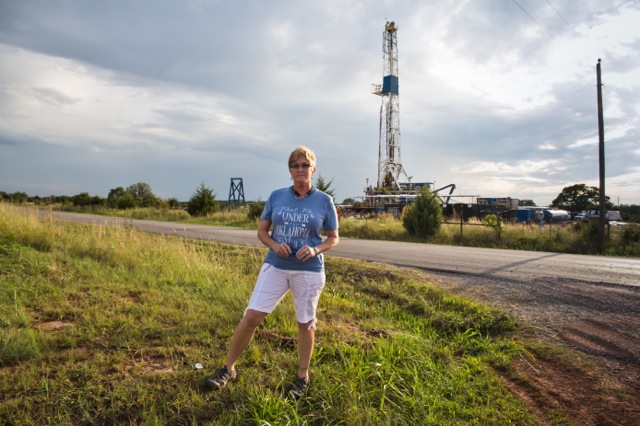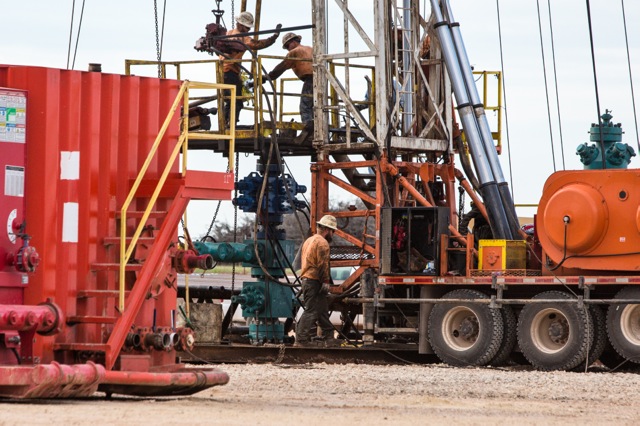As Oklahoma continues to experience more earthquakes than California this year, residents are questioning why regulators haven’t taken any meaningful action to guard against increased seismic activity.
The U.S. Geological Survey (USGS) says that wastewater injection into deep geologic formations, a part of the hydraulic fracturing (fracking) process, is a likely contributing factor to this increase in quakes. The phenomenon, known as “injection-induced seismicity,” has been documented for nearly half a century, according to the USGS.
“The rate of earthquakes in Oklahoma has increased remarkably since October 2013 — by about 50 per cent — significantly increasing the chance for a damaging magnitude 5.5 or greater quake in central Oklahoma,” says the USGS report.
Angela Spotts is one of many Oklahoma residents who is wondering why no meaningful action has been taken to safeguard residents.
Angela Spotts across from a drilling rig at a hydraulic fracturing site near her home. ©2014 Julie Dermansky
“It is kind of like an assault. You feel like you are being sacrificed for this gold they are pulling out of the ground. And you start meeting people that are getting sick,” Spotts, a member of Stop Fracking Payne County, told DeSmogBlog. “It is the tobacco industry all over again.”
Drilling rig in Stillwater County, near Angela Spotts home. ©2014 Julie Dermansky
When oil and gas companies use a method called hydraulic fracturing, or “fracking,” they blast a high-pressure chemical concoction underground to break apart rock to release oil and gas. This process results in high volumes of toxic wastewater that is disposed of by injecting it at high pressures deep under ground into what are known as wastewater injection wells. These disposal wells can lubricate subterranean faults, causing earthquakes.
There have been more than 400 magnitude 3.0 or greater earthquakes in Oklahoma this year, coinciding with a fracking boom in Central and Northern Oklahoma, and across the state line in southern Kansas. Stop Fracking Payne County counts 480 earthquakes over magnitude 3.0 as of today. The group’s figures are derived by following Oklahoma’s USGS site.
“This isn’t new science,” Oklahoma State University geology professor Todd Halihan told DeSmogBlog.
What is new is how we deal with science that is coupled with uncertainty, he says. Though scientists can link injection well use to earthquakes, linking a specific well to a specific quake is not possible.
Subscribe to our newsletter
Stay up to date with DeSmog news and alerts








